"Mal was anderes..." Kein Hardcore-SF oder Anime/Mecha, aber doch in die Richtung und dank "Stealth" ein populäres Thema: der zweite YA-14A Prototyp, während USAF DT&E (Demonstration Testing and Evaluation) Versuchen, 2016.

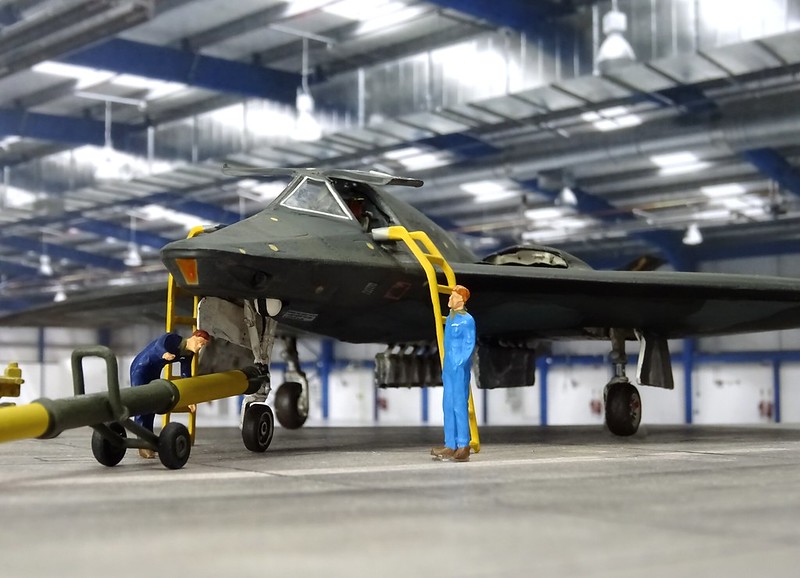

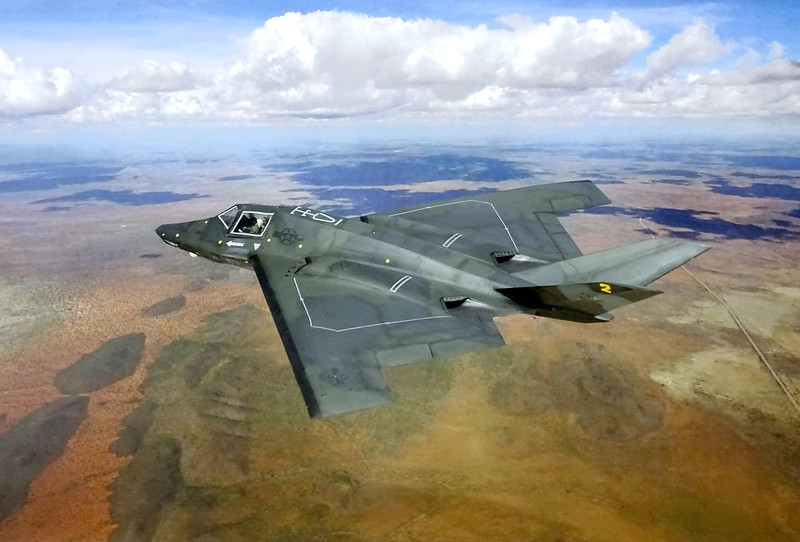
Some background:The A-14 program originally started in 2005 as a private venture, initiated by Northrop-Grumman together with the Elbit Group as a joint venture through Elbit’s Texas-based aircraft division M7 Aerosystems, an approved supplier to major aerospace clients. The aircraft was intended to replace the USAF’s A-10 attack aircraft as well as early F-16s in the strike role from 2010 onwards. The time slot for the project turned out to be advantageous, because at that time the USAF was contemplating to replace the simple and sturdy A-10 with the much more complex F-35, eventually even with its VTOL variant, and the highly specialized F-117 was retired, too.
The A-14 revived conceptual elements of Grumman’s stillborn A-12 stealth program for the US Navy, which had also been part of the USAF’s plans to replace the supersonic F-111 tactical bomber, but on a less ambitious and expensive level concerning technology, aiming for a more effective compromise between complexity, survivability and costs. The basic idea was an updated LTV A-7D (the A-10’s predecessor from the Vietnam War era), which had far more sophisticated sensor and navigation equipment than the rather simple but sturdy A-10, but with pragmatic stealth features and a high level of survivability in a modern frontline theatre or operations.
M7 Aerosystems started on a blank sheet, even though Northrop-Grumman’s A-12 influence was clearly visible, and to a certain degree the aircraft shared the basic layout with the F-117A. The A-14 was tailored from the start to the ground attack role, and therefore a subsonic design. Measures to reduce radar cross-section included airframe shaping such as alignment of edges, fixed-geometry serpentine inlets that prevented line-of-sight of the engine faces from any exterior view, use of radar-absorbent material (RAM), and attention to detail such as hinges and maintenance covers that could provide a radar return. The A-14 was furthermore designed to have decreased radio emissions, infrared signature and acoustic signature as well as reduced visibility to the naked eye.




The resulting airframe was surprisingly large for an attack aircraft – in fact, it rather reminded of a tactical bomber in the F-111/Su-24 class than an alternative to the A-10. The A-14 consisted of a rhomboid-shaped BWB (blended-wing-and-body) with extended wing tips and only a moderate (35°) wing sweep, cambered leading edges, a jagged trailing edge and a protruding cockpit section which extended forward of the main body.
The majority of the A-14’s structure and surface were made out of a carbon-graphite composite material that is stronger than steel, lighter than aluminum, and absorbs a significant amount of radar energy. The central fuselage bulge ended in a short tail stinger with a pair of swept, canted fins as a butterfly tail, which also shrouded the engine’s hot efflux. The fins could have been omitted, thanks to the aerodynamically unstable aircraft’s fly-by-wire steering system, and they effectively increased the A-14’s radar signature as well as its visual profile, but the gain in safety in case of FBW failure or physical damage was regarded as a worthwhile trade-off. Due to its distinctive shape and profile, the A-14 quickly received the unofficial nickname “Squatina”, after the angel shark family.
The spacious and armored cockpit offered room for the crew of two (pilot and WSO or observer for FAC duties), seated side-by-side under a generous glazing, with a very good field of view forward and to the sides. The fuselage structure was constructed around a powerful cannon, the five-barrel GAU-12/U 25 mm ‘Equalizer’ gun, which was, compared with the A-10’s large GAU-8/A, overall much lighter and more compact, but with only little less firepower. It fired a new NATO series of 25 mm ammunition at up to 4.200 RPM. The gun itself was located under the cockpit tub, slightly set off to port side, and the front wheel well was offset to starboard to compensate, similar in arrangement to the A-10 or Su-25. The gun’s ammunition drum and a closed feeding belt system were located behind the cockpit in the aircraft’s center of gravity. An in-flight refueling receptor (for the USAF’s boom system) was located in the aircraft’s spine behind the cockpit, normally hidden under a flush cover.
Due to the gun installation in the fuselage, however, no single large weapon bay to minimize radar cross section and drag through external ordnance was incorporated, since this feature would have increased airframe size and overall weight. Instead, the A-14 received four, fully enclosed compartments between the wide main landing gear wells and legs. The bays could hold single iron bombs of up to 2.000 lb caliber each, up to four 500 lb bombs or CBUs, single laser-guided GBU-14 glide bombs, AGM-154 JSOW or GBU-31/38 JDAM glide bombs, AGM-65 Maverick guided missiles or B61 Mod 11 tactical nuclear weapons, as well as the B61 Mod 12 standoff variant, under development at that time). Retractable launch racks for defensive AIM-9 Sidewinder air-to-air missiles were available, too, and additional external pylons could be added, e.g. for oversize ordnance like AGM-158C Long Range Anti-Ship Missile (LRASM) or AGM-158 Joint Air to Surface Standoff Missile (JASSM), or drop tanks for ferry flights. The total in- and external ordnance load was 15,000 lb (6,800 kg).



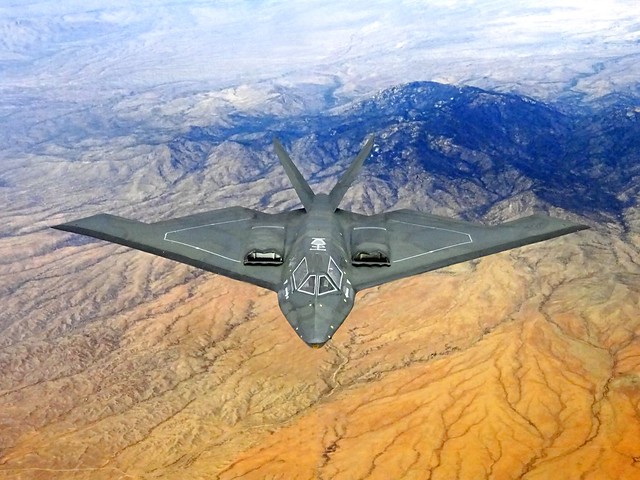
The A-14 was designed with superior maneuverability at low speeds and altitude in mind and therefore featured a large wing area, with high wing aspect ratio on the outer wing sections, and large ailerons areas. The ailerons were placed at the far ends of the wings for greater rolling moment and were split, making them decelerons, so that they could also be used as air brakes in flight and upon landing.
This wing configuration promoted short takeoffs and landings, permitting operations from primitive forward airfields near front lines. The sturdy landing gear with low-pressure tires supported these tactics, and a retractable arrester hook, hidden by a flush cover under the tail sting, made it possible to use mobile arrested-recovery systems.
The leading edge of the wing had a honeycomb structure panel construction, providing strength with minimal weight; similar panels covered the flap shrouds, elevators, rudders and sections of the fins. The skin panels were integral with the stringers and were fabricated using computer-controlled machining, reducing production time and cost, and this construction made the panels more resistant to damage. The skin was not load-bearing, so damaged skin sections could be easily replaced in the field, with makeshift materials if necessary.
Power came from a pair of F412-GE-114 non-afterburning turbofans, engines that were originally developed for the A-12, but de-navalized and lightened for the A-14. These new engines had an output of 12,000 lbf (53 kN) each and were buried in blended fairings above the wing roots, with jagged intakes and hidden ducts. Flat exhausts on the wings’ upper surface minimized both radar and IR signatures.
Thanks to the generous internal fuel capacity in the wings and the fuselage, the A-14 was able to loiter and operate under 1,000 ft (300 m) ceilings for extended periods. It typically flew at a relatively low speed of 300 knots (350 mph; 560 km/h), which made it a better platform for the ground-attack role than fast fighter-bombers, which often have difficulty targeting small, slow-moving targets or executing more than just a single attack run on a selected target.
A mock-up was presented and tested in the wind tunnel and for radar cross-section in late 2008. The A-14’s exact radar cross-section (RCS) remained classified, but in 2009 M7 Aerosystems released information indicating it had an RCS (from certain angles) of −40 dBsm, equivalent to the radar reflection of a "steel marble". With this positive outcome and the effective design, M7 Aerosystems eventually received federal funding for the production of prototypes for an official DT&E (Demonstration Testing and Evaluation) program.



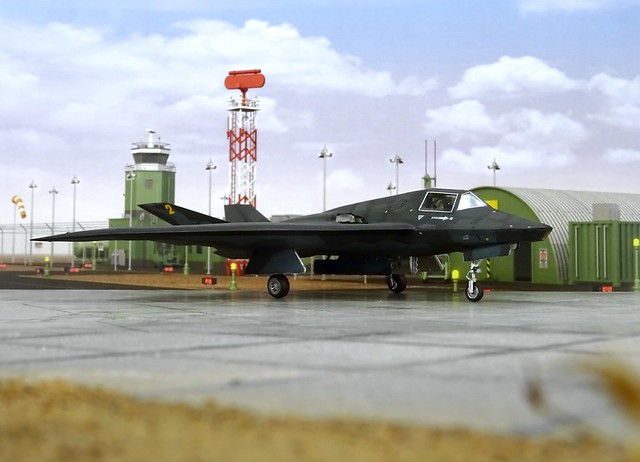
Three prototypes/pre-production aircraft were built in the course of 2010 and 2011, and the first YA-14 made its maiden flight on 10 May 2011. The DT&E started immediately, and the machines (a total of three flying prototypes were completed, plus two additional airframes for static tests) were gradually outfitted with mission avionics and other equipment. This included GPS positioning, an inertial navigation system, passive sensors to detect radar usage, a small, gyroscopically stabilized turret, mounted under the nose of the aircraft, containing a FLIR boresighted with a laser spot-tracker/designator, and an experimental 3-D laser scanning LIDAR in the nose as a radiation-less alternative to a navigation and tracking radar.
Soon after the DT&E program gained momentum in 2012, the situation changed for M7 Aerosystems when the US Air Force considered the F-35B STOVL variant as its favored replacement CAS aircraft, but concluded that the aircraft could not generate a sufficient number of sorties. However, the F-35 was established as the A-14’s primary rival and remained on the USAF’s agenda. For instance, at that time the USAF proposed disbanding five A-10 squadrons in its budget request to cut its fleet of 348 A-10s by 102 to lessen cuts to multi-mission aircraft in service that could replace the specialized attack aircraft.
In August 2013, Congress and the Air Force examined various proposals for an A-10 replacement, including the A-14, F-35 and the MQ-9 Reaper unmanned aerial vehicle, and, despite the A-14’s better qualities in the ground attack role, the F-35 came out as the overall winner, since it was the USAF’s favorite. Despite its complexity, the F-35 was – intended as a multi-role tri-service aircraft and also with the perspective of bigger international sales than the more specialized A-14 – regarded as the more versatile and, in the long run, more cost-efficient procurement option. This sealed the A-14’s fate and the F-35A entered service with U.S. Air Force F-35A in August 2016 (after the F-35B was introduced to the U.S. Marine Corps in July 2015). At that time, the U.S. planned to buy 2,456 F-35s through 2044, which would represent the bulk of the crewed tactical airpower of the U.S. Air Force, Navy, and Marine Corps for several decades.
Since the A-14’s technology was considered to be too critical to be marketed to export customers (Israel showed early interest in the aircraft, as well as South Korea), the program was cancelled in 2016.
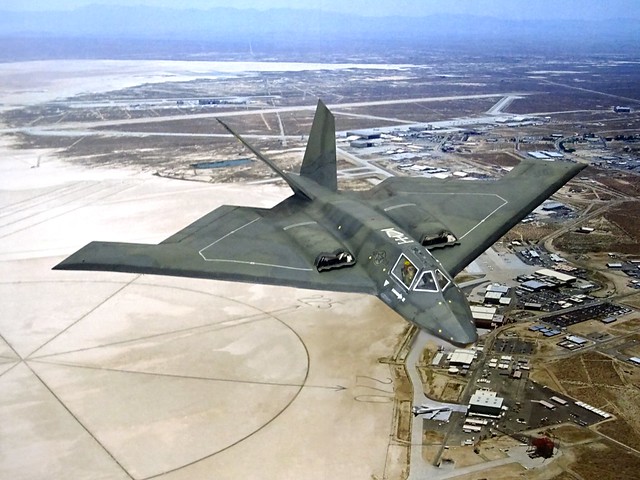



General characteristics: Crew: 2 (pilot, WSO)
Length: 54 ft 11 1/2 in (16.78 m)
Wingspan: 62 ft 11 1/2 in (19.22 m)
Height: 11 ft 3 3/4 in (3.45 m)
Wing area: 374.9 ft² (117.5 m²)
Empty weight: 24,959 lb (11,321 kg)
Loaded weight: 30,384 lb (13,782 kg)
Max. takeoff weight: 50,000 lb (22,700 kg)
Internal fuel capacity: 11,000 lb (4,990 kg)
Powerplant: 2× General Electric Whitney F412-GE-114 non-afterburning turbofans
with 12,000 lbf (53 kN) thrust each
Performance: Maximum speed: 630 mph (1,010 km/h, 550 kn) at 40,000 ft altitude /
Mach 0.95 at sea level
Cruise speed: 560 mph (900 km/h, 487 kn) at 40,000 ft altitude
Range: 1,089 nmi (1,253 mi, 2,017 km)
Ferry range: 1,800 nmi (2,100 mi, 3,300 km)
Service ceiling: 50,000 ft (15,200 m)
Rate of climb: 50,000 ft/min (250 m/s)
Wing loading: 133 lb/ft² (193 kg/m²)
Thrust/weight: 0.48 (full internal fuel, no stores)
Take-off run: 1,200 m (3,930 ft) at 42,000 lb (19,000 kg) over a 15 m (30 ft) obstacle
Armament: 1× General Dynamics GAU-12/U Equalizer 25 mm (0.984 in) 5-barreled rotary cannon
with 1,200 rounds (max. capacity 1,350 rounds)
4x internal weapon bays plus 4x external optional hardpoints with a total capacity of
15,000 lb (6,800 kg) and provisions to carry/deploy a wide range of ordnance


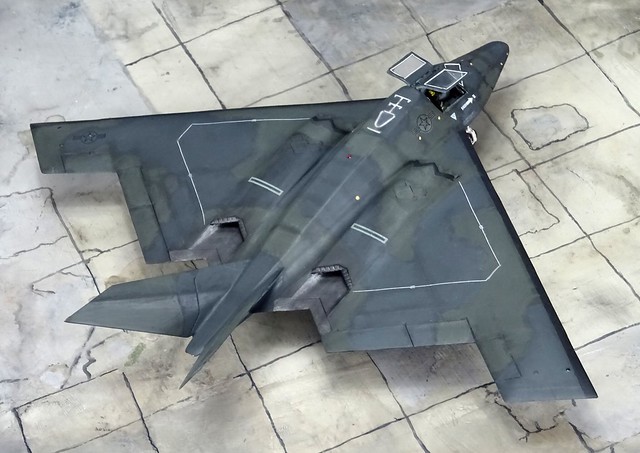


Oder ist es viellicht
doch der nachste Batwing von Wayne Industry?

Hat auf jeden Fall einen eigentümlichen, sogar recht plausiblen Look. Und ich lasse an dieser Stelle offen, was so alles in das Kitbashing für das Modell eingeflossen ist (neben größeren Mengen an Spachtel, natürlich

).
Wen es interessiert: WiP-Bilder und entsprechende Becschreibungen/Gedanken zu Bau und Bemalung gibt es hier:
https://www.flickr.com/photos/dizzyfugu/albums/72157715717099376